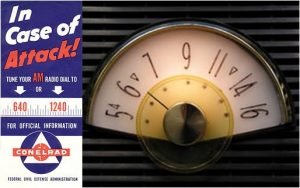
In our last installment examining the state of AM Radio today, we reviewed the FCC & it’s role in AM’s future survival. While the blog discussed historical failure to implement measures to save the band, the prevalent point remained the FCC’s shift from a technical & engineering based regulator, to one influenced by politics, lobbying & over-extension of it’s mandate & responsibilities by the president’s office. But, the FCC has failed AM radio & allowed an increase to the amount of radiated pollution we are all bombarded with in our daily lives. I’m talking interference here. Interference resulting from failure to implement tougher measures to ensure our shiny new electronics are not radiating or accidentally transmitting ‘spurious emissions.’ Interference resulting from relaxed standards for imported electronics – particularly the cheap, discounted “gray market” Chinese electronics. Much of these products are questionable as to compliance of FCC emissions regulations when tested under laboratory conditions. Even broadcast & ham radio equipment exported from China does not meet up with the US standards that were once upheld, regulated & enforced by the FCC. The commission however, has over time, caved in to demands for cheaper consumer electronics and as a result, we have inferior, poorly designed & engineered products adding to the “noise” pollution caused by radiating devices. For many years, power utility companies have utilized technology allowing them to use power lines themselves as a means of self-monitoring. Now the FCC, Canada’s CRTC, Britain’s Ofcam & others are allowing broadband wireless devices to utilize & make use of power lines for similar transmissions, providing city-wide wireless access. Add to this, the lack of enforcement or timely maintenance of utility power pole “transformers” that are a great source of interference to AM radio signals, compounding the interference suffered from wireless usage to AM. Anyone driving under one of these power transformers emitting radiation immediately notices it while listening to AM radio in their cars. Even the most robust 50 kW AM disappears, to be replaced by a large, annoying barrage of ‘static’ when driving too close to, or sometime under power lines with defective transformers.

The overall interference to AM radio signals is so bad, that now the commission is considering a (questionable) fix by considering power increases for regional licensees operating on Class C clear channels. This ill-thought proposal will simply add more noise pollution & will do nothing to solve mobile reception issues for AM stations serving motorists. It will also hinder the important ability of Class C’s to cover large geographical areas during disasters & emergencies by covering these signals up will lesser powered smaller market stations.

Whether the increasing noise pollution from radiating (RF) devices & electronics is detrimental to human life & health remains questionable & controversial. I don’t profess to have those answers. State employment health & safety depts.’ all have guidelines & maximum exposure distance &
time limits for broadcast & other communications personnel working at transmitter & tower sites. There is no question that large amounts of radiation exposure is noticeable after a period of working at these sites, as I can attest to from personal experience. That feeling that one has a “sunburn” on a cloudy or rainy day is an indication that one has spent too much time exposed to radiation at such intense levels. Users of handheld 2-way radios & cell-phone users are often reminded to minimize exposure &/or to keep such devices away from faces & other body parts to a minimum. However, whether the FCC’s relaxed limits on interference to radio signals – or “RFI” as it’s acronym, will, in the long term, contribute to increased health problems or rise in death rates is unknown. Nevertheless, today’s FCC is reckless for not erring on the side of caution nor making a priority, studies to determine if current levels of RFI are safe. They certainly haven’t contributed to robust continuance for AM broadcasters. This is yet another sign that today’s FCC has little interest in technically sound, well-engineered solutions to AM future amidst changing communications needs necessitating newer & newer technology requiring more & more bandwidth & transmission. Interference & offside! Call the referee!
Aside from the FCC’s lack of support, AM radio today faces another, far more serious interference threat to it’s continued existence that may not have a solution available. That’s a topic that will get covered in a future blog.


Some comments may be held for moderation. (New users)